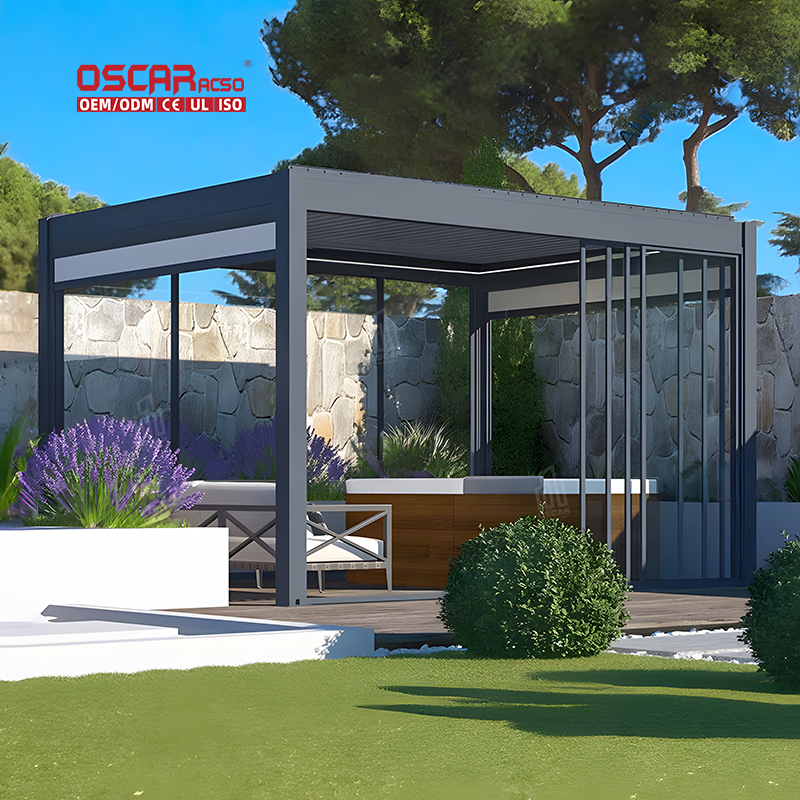Pergola\’s Ancient Roots, From Egyptian Gardens to Modern Backyards
Ever gazed at a pergola in a garden and wondered where this elegant structure truly came from? 🌍 Its journey is far ...
Ever gazed at a pergola in a garden and wondered where this elegant structure truly came from? 🌍 Its journey is far more ancient and fascinating than you might imagine, stretching back thousands of years across mighty empires.
.jpg)
✨ Earliest Traces in Ancient Egypt
The pergola’s story begins not in Europe, but under the scorching Egyptian sun ☀️. Evidence suggests that as far back as ancient times, Egyptians used vine-covered wooden structures to create shaded areas in their gardens and courtyards . These were practical solutions to beat the heat, providing cool, relaxing spaces for the elite. They cleverly used materials like palm fronds and woven reeds to craft roof-like structures that offered protection while allowing air to circulate—a perfect blend of early form and function .
✨ Classical Refinement in Greece and Rome
The concept was then embraced and refined by the ancient Greeks and Romans 🏛. The very word “pergola” originates from the Latin ”pergula,” meaning a projecting eave . In wealthy Roman villas and public gardens, pergolas became common features. They were masterfully used to:
- •
Support climbing plants like grapevines 🍇
- •
Create beautifully shaded walkways
.jpg)
- •
Enhance the beauty of courtyards

The Greeks, with their profound love for outdoor living and beauty, integrated pergolas into their gardens, often adorning them with climbing vines like wisteria, transforming them into spaces of natural allure and fragrant beauty .
✨ The Islamic and Persian Influence

The pergola’s design philosophy also found a home in medieval Islamic architecture 🌹. Garden pavilions and shaded arcades in Persia echoed the pergola’s structure, emphasizing symmetry, water, shade, and serenity . These elements became central in palace courtyards and significantly influenced later Ottoman and Moorish garden designs, showcasing a different aesthetic approach to creating shaded, tranquil spaces .
✨ Renaissance Revival in Italy
After the classical period, the pergola experienced a magnificent revival during the Italian Renaissance 🎨. It re-emerged as a central feature in the formal gardens of grand estates in Florence and Venice . These were often grand structures with stone columns, covered in roses or vines, and integrated into pathways or terraces . They were symbols of luxury and humanity’s desire to control and beautify nature, spreading from Italy to influence garden designs across France and England .
.jpg)
✨ The Modern Pergola Evolution
Today’s pergolas retain their timeless charm but have embraced modern materials and technologies 🔧. While wood remains a classic choice for its natural warmth, options now include:
- •
Aluminum: Lightweight, durable, and rust-resistant.
- •
Vinyl: A low-maintenance option that resists rot and pests.
- •
Composite materials: Offer excellent weather resistance.
- •
Glass: Used for retractable roofs or hybrid designs .
Modern engineering has introduced motorized louvers, integrated LED lighting, and rain sensors . This transformation has turned the pergola from a simple garden accessory into a sophisticated outdoor living room, a true extension of our indoor spaces designed for comfort, entertainment, and year-round enjoyment .
From my perspective, the pergola’s enduring appeal lies in its unique ability to blend architecture with nature 🌿. It’s a structure that doesn’t just dominate a space but enhances and frames it, encouraging plants to grow and people to linger. While modern materials like aluminum offer incredible durability and low maintenance, there’s an undeniable, timeless romance about a wooden pergola draped in flowering vines—it feels alive.
The pergola’s history is a testament to its brilliant and adaptable design. It’s a simple idea—a framework for shade and growth—that has effortlessly transcended cultures and millennia, proving that truly good design is indeed eternal.

